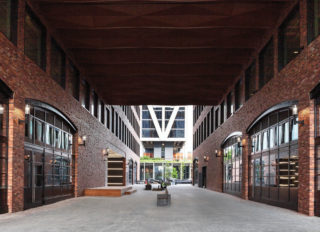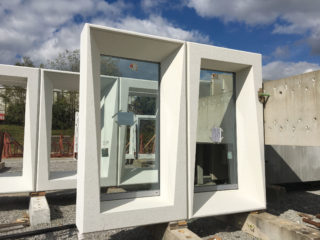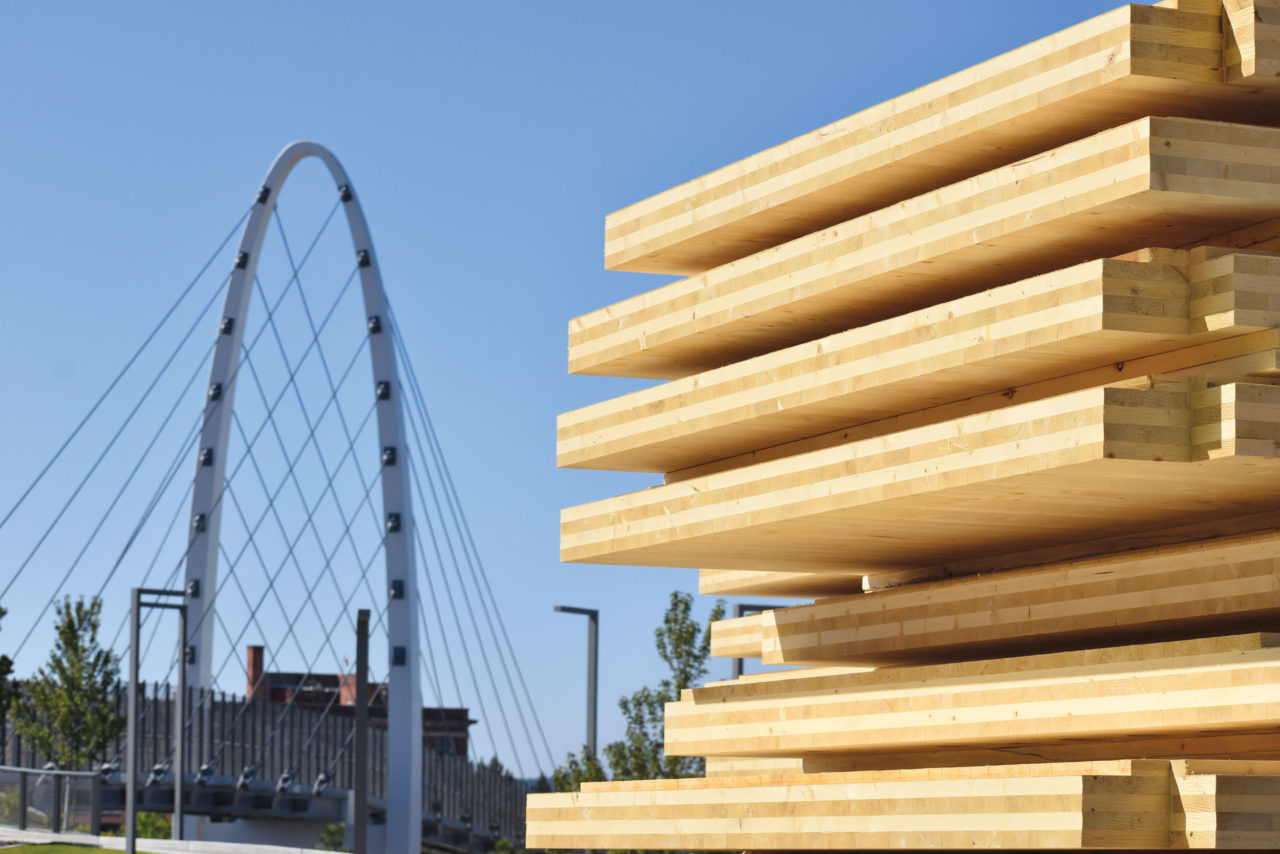
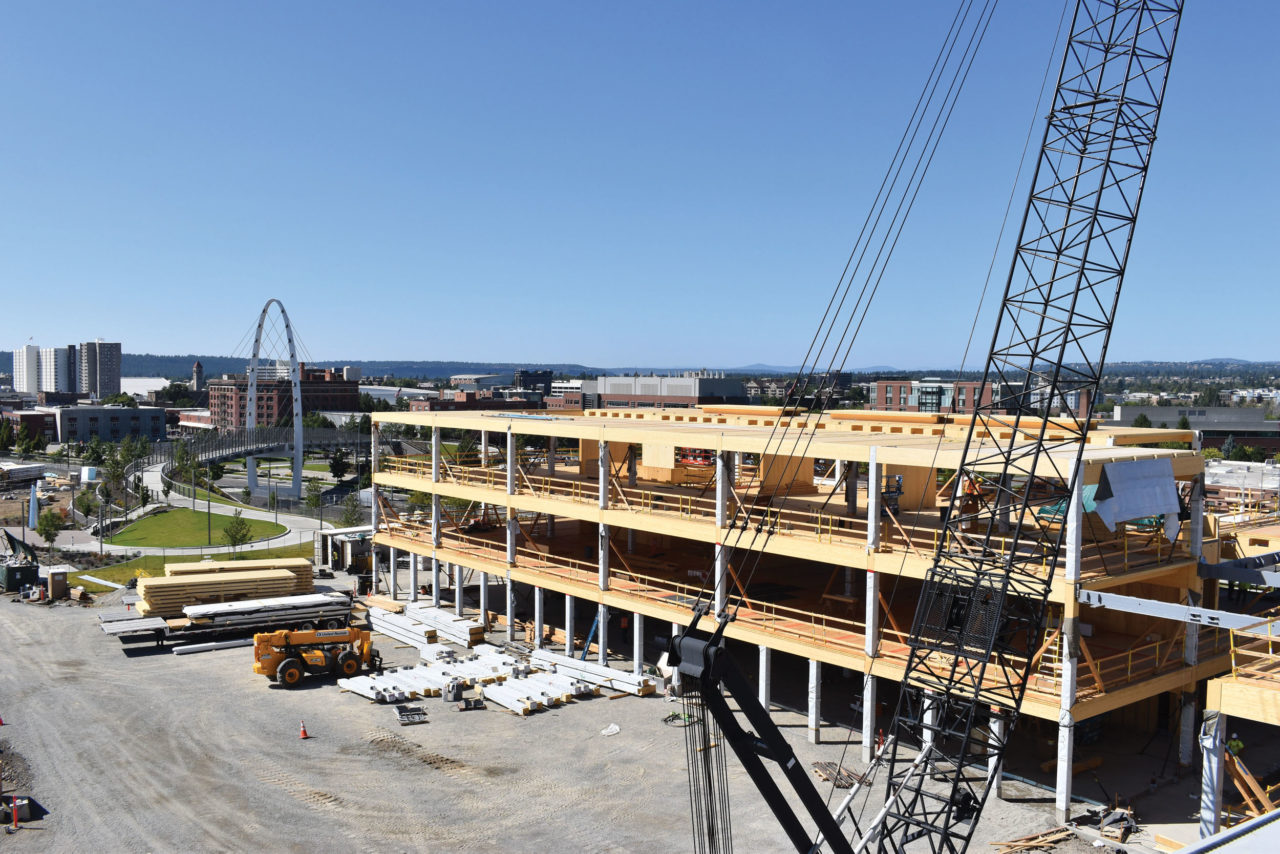
< Read more from “Building Materials, Ancient to Future”
Cross-laminated timber (CLT), a relatively new building product in the U.S., is touted as a more environmentally friendly and lower-cost alternative to concrete and steel, but currently it is not permitted under New York City building codes and those of many other municipalities. That is about to change, thanks to provisions in the 2015 International Building Code that the city is on track to adopt next year.
The incorporation of CLT into the city’s building codes is welcomed by proponents such as New York City developer Jeff Spiritos who, with SHoP Architects, had planned to build the city’s first CLT high-rise building on West 18th Street in Manhattan several years ago. That project received national attention because it was the recipient of the U.S. Tall Wood Building Prize, established under the 2015 Timber Innovation Act passed by Congress. But Spiritos said he had to shelve the development in large part because of the cumbersome process of obtaining the necessary special permits from the NYC Department of Buildings.
Currently, Spiritos has several multifamily CLT projects underway: two in New Haven, Connecticut, and one in New Rochelle, New York, which are being designed by the firm Gray Organschi Architecture. Spiritos says he is inspired to build with CLT out of a concern for the environment but also because of cost savings, especially in a city like New York, where labor costs are high. “Wood is a renewable resource and it is environmentally imperative when you consider that build- ings contribute 40% to 50% of greenhouse gases,” he says. “On average, mass timber projects in New York City will be 10% to 20% less expensive overall than block and plank, concrete, or steel.”
The code changes will be much less costly and make it easier for architects to get approvals for mass timber buildings, says Andrew Ruff, senior associate at Gray Organschi Architecture. He notes that currently, “You have to show all your numbers, which is possible, but requires a design team that is willing to go through all these steps.”
Back in the 1800s, most of the buildings in U.S. were built from wood, but urban fires and new building technologies spurred changes. Now, innovations in timber technology that address fireproofing issues combined with an appreciation of the environmental benefits of building with wood is reawakening an interest in the material. There are several new recently completed mid-rise buildings in Brooklyn that incorporate nail-laminated timber, a wood technology from the 19th century, which is currently permitted under NYC Building codes. Those buildings, designed by Flank Architecture, are reportedly the first new brick-and-beam structures built in the city in the past hundred years.
However, CLT, a mass timber product, offers significant advantages over nail-laminated timber. It is considered strong enough for taller structures and can also be used throughout an entire building. CLT consists of sheets of jointed wood members stacked crosswise and glued together on their wide faces, which provides dual-span strength, as opposed to nail-laminated timber, which provides only single-span strength. Concerns about seismic and fireproofing issues were a major disincentive to using CLT in large-scale urban buildings, but testing by the International Code Council has paved the way for its adoption into building codes.
CLT has been on the market for about 25 years, and it has made inroads in Europe, most notably Austria, which has the world’s largest mass timber industry. In England there are about 600 buildings made from the material, including critically acclaimed structures such as the nine-story Murray Grove in London, designed by Waugh Thistleton Architects. That structure took only 49 weeks to build, whereas an equivalent concrete structure would have typically taken 72 weeks.
In addition to being significantly lighter in weight than concrete, CLT involves less construction waste and, because it can be craned into place, takes up less space on city streets during construction projects. “The real game changer with CLT has been that you can use it as a floor,” says Kenneth Brand, vice president of codes and compliance at the American Wood Council. “There is no need to shore it underneath and hold it together for several days; it is ready as soon as it is in place.”
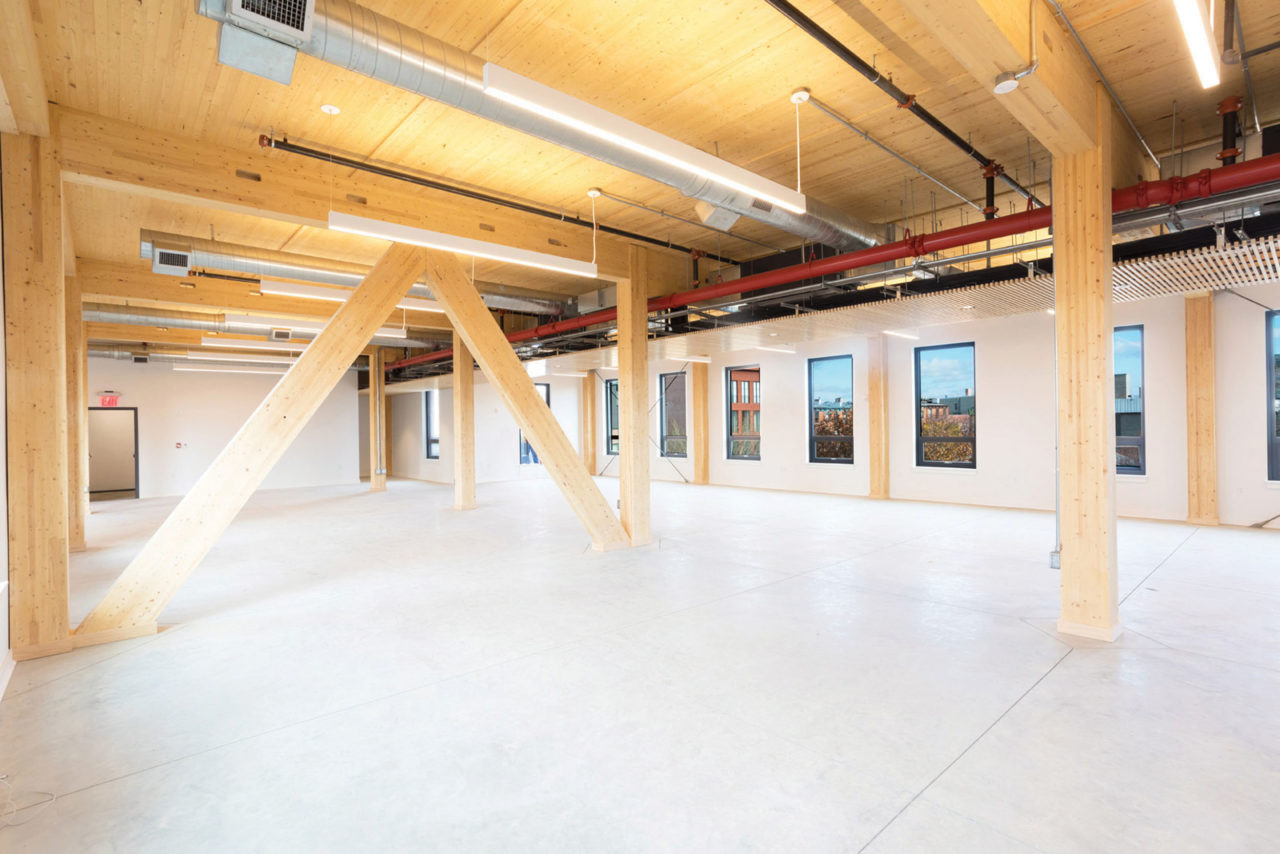
The 2015 International Building Code allows CLT buildings of six stories or 85 feet high. According to Brand, however, the big implications for dense urban environments such as New York City will be in the new 2021 International Building Code, which he says will allow 18-story buildings.
The acceptance of CLT by municipal building departments should hasten acceptance of other mass timber products com- ing to market, most notably mass plywood, a new material composed of plywood veneers. In August, Mass Plywood, manufactured by Freres Lumber in Oregon, received approval for use as a structural material from the APA – The Engineered Wood Association. Mass plywood, according to Freres’s web-site, has greater minimum design values in cross sections than does CLT, and it also allows for more custom tailoring to meet the needs of the end user.
For Spiritos, the incorporation of new wood technologies into building codes cannot come fast enough. “In the past 50 years, construction costs have increased 10 times,” he says. “We have been building the same way for a long time; we need to fundamentally change the the way we build to reduce environmental and construction costs.”









